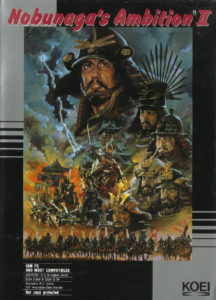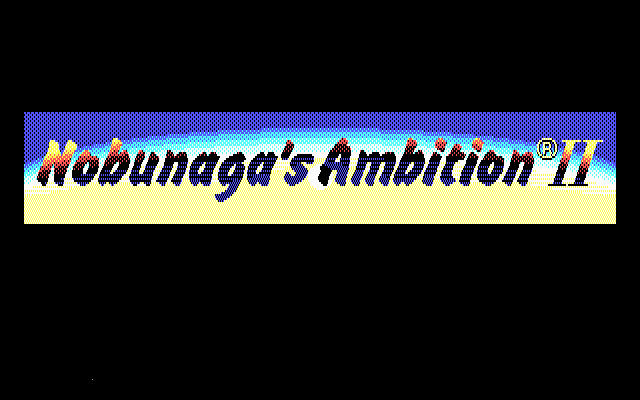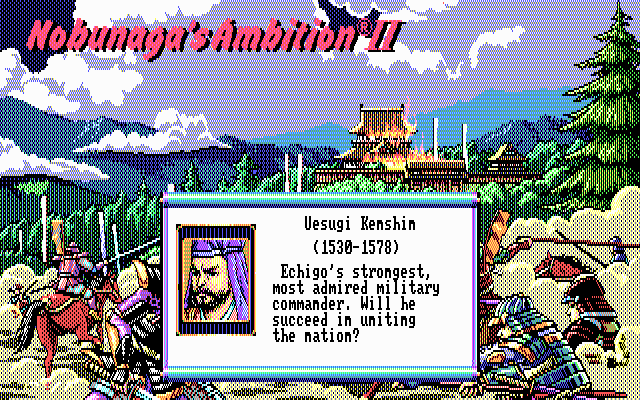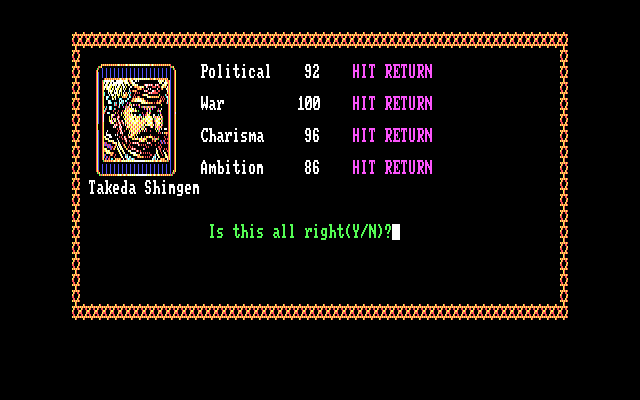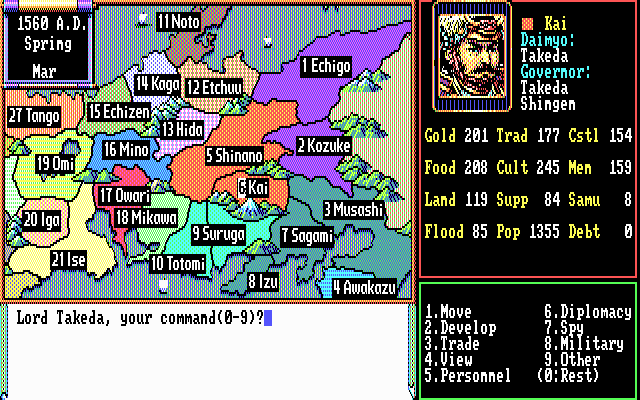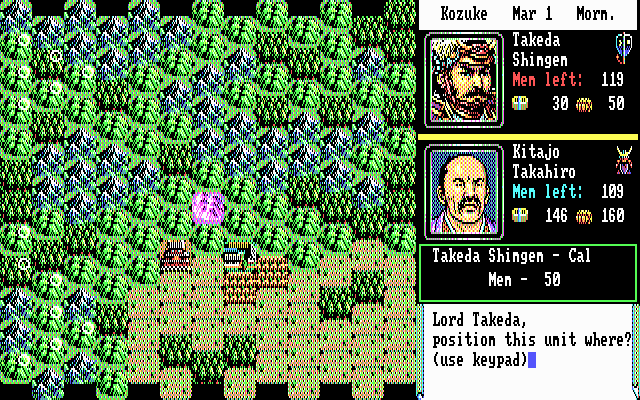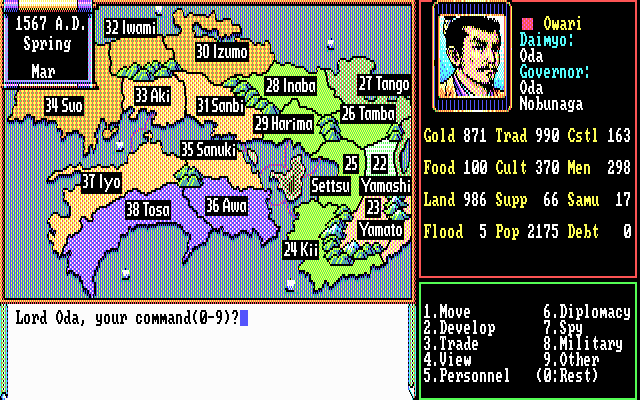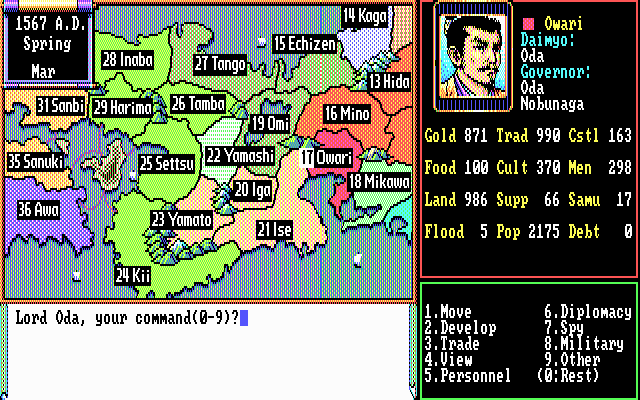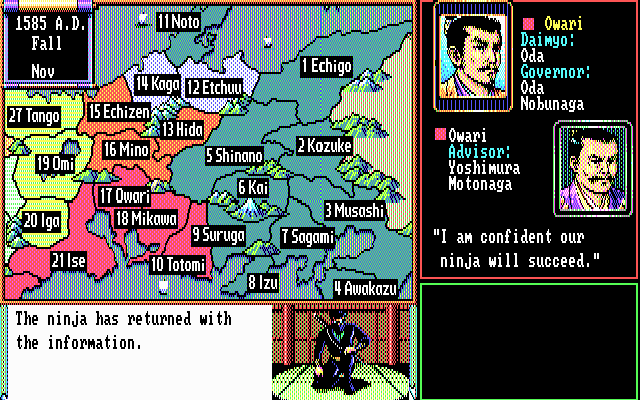Nobunaga’s Ambition II description
The second part of the strategy of Japan in the late middle Ages, the so-called "samurai wars" which resulted in the establishment of the regime of the Shogunate in the country.
You play as an ambitious samurai landowners ("daimyo") on behalf of Nobunaga, and at first you can choose which mode you want to play: "full" (the game starts in 1560, Nobunaga still have nothing special, you can only play it) or "reduced" (the game begins in 1582, the hard part is over, your samurai is thriving, you can play not only for him but also for anyone and it allies or enemies). Ode belongs to our hero (as well as "Tokugawa" and other) is a samurai house. So if your character dies on the battlefield or at the hands of the ninja, the game will still continue, of course, if you chose a pre-heir. The goal is clear – to unite Japan under the rule of his house. Only here to achieve this very hard...
At the beginning of the game you have a certain amount of land, but about any gains and do not have to think: keep it. The main thing to start is to develop the economy (represented, in fact, one agriculture-one culture – rice) and to protect lands from encroachment of neighboring daimyo. Then when we save up strength (and the strength here is measured in the so-called "body-point Oh", it will be possible already and to war.
NPC (however, they can hardly be called so) in the game a lot, and most of them real historical figures. And most of them can either involve ourselves, or be destroyed. The RPG element in the game is very strong: each samurai has a great set of characteristics (age, grade, possession of various weapons, those "body-points", leadership talent, charm, loyalty and many others).
Espionage - You can send ninja's to other enemy fiefs to either gather information on or spread unrest among its people. If you feel lucky
Incidentally, since the strategy step-by-step, the main (and most complex in terms of calculation and use) are just referred to "body-points": not so much on the specific course, and each more or less important action requires to spend for implementation. You should also note the different sequence of different events. Only two of them – the harvest of rice and the collection of taxes, occur regularly, all the rest – good and bad – by accident.
The war in the game given a lot of attention. "Peaceful" diplomacy too, but frankly rudimentary and is reduced mainly to Union contracts and their termination. But the war... let's Start with the fact that the army will need to collect, train, arm, equip, and then another, and feed, and all this costs money and resources. Further, the army is heterogeneous – there are three types of troops: infantry, archers and cavalry, each type with their own strengths and weaknesses. So, infantry can lure the enemy into an ambush, and the cavalry – to go for a breakthrough from the environment; the arrows, of course, shoot and can bring significant damage to the enemy at a distance. Each type of troops has its own set of "movement ponts" to battle – the number of movements that they are available, this number is always constant and depends on the specific type of troops (alas, no dashing attacks in real time, you will not see here), there is also a special unit – commander (samurai) that can be killed and can be captured you captured (and then again three solutions: we can let it, you can kill, but you can try to get them on their side).
The battle is not limited to just the "plain battle" - no, there are numerous siege and storming castles (and have precipitated a lot of benefits – they need to hold out for the 30 days, then the attacker will have to automatically lift the siege), possible attacks to the rear of the besieging...But for all this, the besieged (and precipitating) should be enough food and weapons because if not, the castle may soon fall.
Military action is presented in two modes on the game map: you will see a map of the province where you will be fighting, and in a particular time indicates a specific date and even time of day: morning, afternoon, or night (night is the advantage – you can make a surprise attack, taking advantage of the darkness, but only if the enemy army is far enough). The second mode is the fight, usually the storming of the castle (in this mode, 1 turn equals one day): for the victory of the besieged is necessary, as already mentioned, hold out a month, striker – break the castle gates and capture, kill or force retreat of the local daimyo.
You may think that "graphics are not important". This is partly true, but only partly. Given the year of release and genre of the game, we can say that the game's graphics amazing. Maybe a global map, and indeed a little dull, but mild isometric combat mode and carefully, lovingly drawn portraits of the samurai simply can not leave indifferent.
Without a doubt, great game, highly recommended to all fans of turn-based strategy and history of the Far East, especially those who love Shogun and Takeda - because it all began with Nobunaga...
Wish to enjoy your afternoon playing some classic videogames? Play Nobunaga’s Ambition II online for free here.
Source: Archive.org, Mobygames.com
